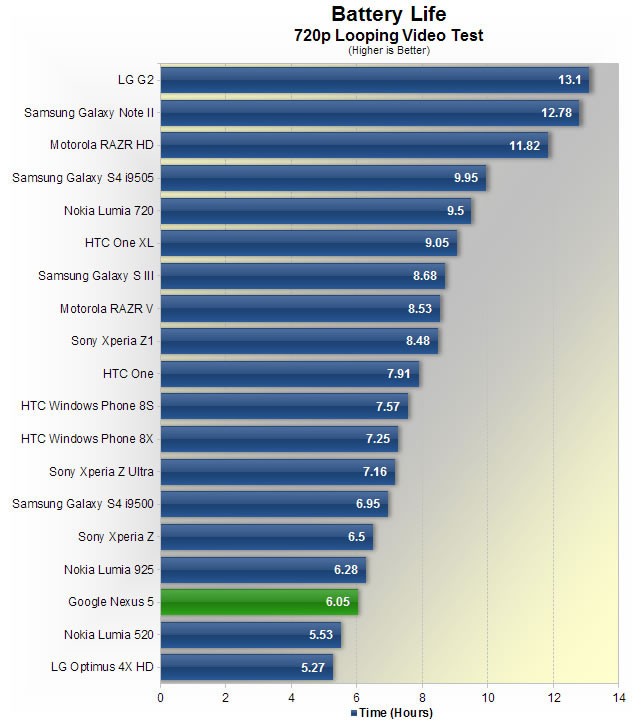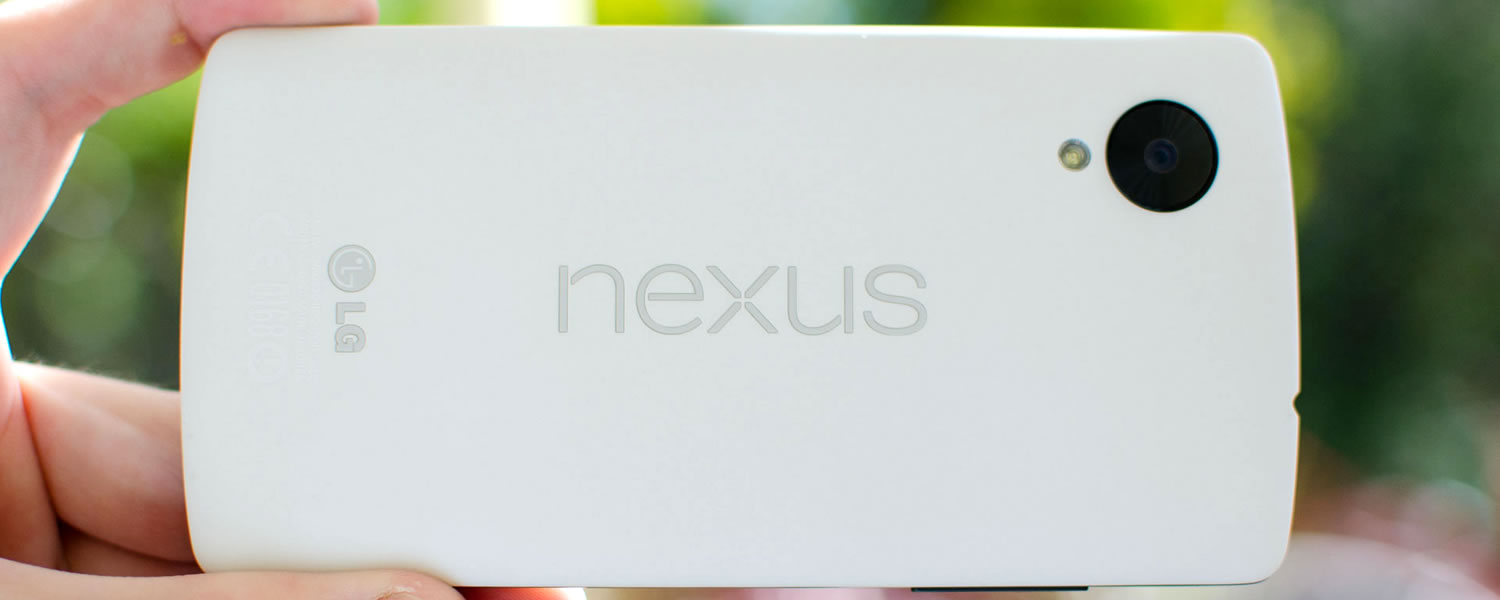Battery Life, Final Thoughts
Inside the Nexus 5 is a non-removable 8 Wh (2,300 mAh) battery that's complemented by Qi wireless charging. Compared to the Nexus 4, the Nexus 5's battery is 10% larger, but still a full 30% smaller than the 11.4 Wh (3,000 mAh) battery used in the Xperia Z1 and LG G2, both Snapdragon 800-powered devices. With a battery that's a little small for my liking, the battery life was probably the biggest worry of mine going into this review.
During my regular usage of this device across a week or so, the Nexus 5 doesn't quite qualify as an all-day battery device. Doing the usual array of everyday tasks - messaging, web browsing on HSPA+, social media, emailing with background sync, a few photos and maybe a call across at least 12 hours - the handset did last through the day with around 15% of the total juice remaining. However I would like more headroom in the juice available for me, and heavy smartphone users could find themselves with a dead phone as they head home at the end of a day.
The easiest way to drain the Nexus 5's juice is through gaming, as I achieved around three and a half hours of game time on the device in 3D-intense titles. Naturally your results may vary, but this isn't the battery life powerhouse that LG produced with the G2, and there's no battery saver mode built into Android 4.4 that attempts to lengthen the handset's life. Like with most phones the display is often to blame for high battery drain, especially at high brightness levels, so moderating the backlight power could potentially give you better stamina.

In our battery life test, where we loop a 720p video at 75% brightness in airplane mode until the phone dies, the Nexus 5 lasted just over six hours. This is a disappointing result, not only because it falls below the eight hour mark (which generally designates great battery life), but it also failed to live up to the performance of other Snapdragon 800 devices. The Xperia Z1 has a 30% larger battery but lasted 40% longer, while the LG G2 also has a 30% larger battery and lasted a whopping 115% longer.
The difference in battery life is likely due to a number of reasons, namely few battery optimizations in the software for this device, and a power hungry display which doesn't use identical technology to the one in the LG G2. With some tweaks here and there in a future software update I'm sure the battery life situation could improve, but for now it's a bit below average.
Final Thoughts
Once again, Google has managed to deliver an astonishing package for an unbelievable price tag. The Snapdragon 800 SoC, five-inch 1080p IPS display, LTE connectivity and minimalist yet functional design would all be well suited to a handset nearly twice the price, yet the Nexus 5 brings it all together for just $349.
On its value alone it's easy to convince someone of the benefits of the handset, but let's not forget the hardware and software that makes this phone a hit. The display is as good as any you can find on the market, with fantastic color reproduction and a top-notch resolution, while the 2.3 GHz quad-core CPU provides all the oomph you need and then some. Android 4.4 KitKat has a great array of new features and improvements, plus the Nexus program benefits like no OEM skins and fast updates is a serious bonus.
There aren't a huge number of pertinent issues with the Nexus 5, but it can be easy to overlook the few of them at such a low price point. The battery life is the smartphone's weakest aspect, failing to live up to the heights of the LG G2, Galaxy S4 or Xperia Z1, and although the camera is much improved compared to previous Nexus devices, it's not as impressive as any of the competition.
Other flagship smartphones may pack more features in one area or another, but the Nexus 5 shouldn't be overlooked. Top-end hardware, mid-range price and the stock Google experience is a satisfying combination no matter how you look at it.
score
Pros: Unbeatable value for money thanks to a low price point. Fantastic display complements a decent design and powerful, high-end internals. Stock Android is a blessing, especially with KitKat's refinements.
Cons: Battery life isn't this phone's strong suit. Camera can be wildly inconsistent and remains a step behind the competition, despite improvements.


